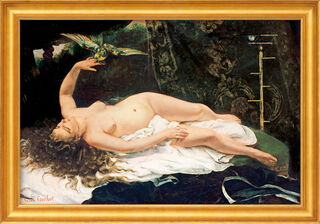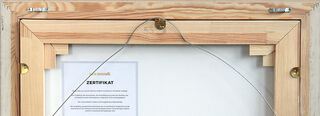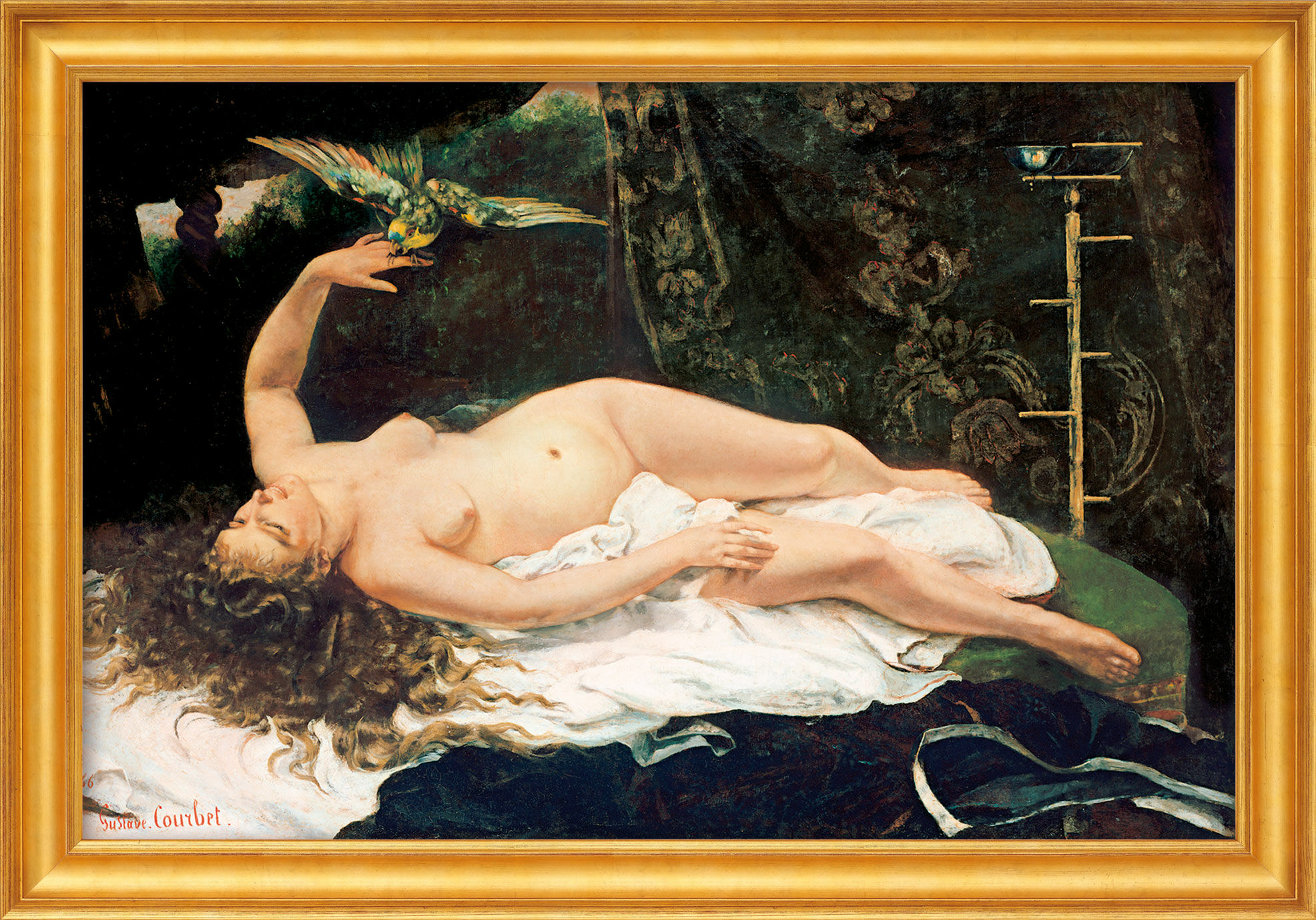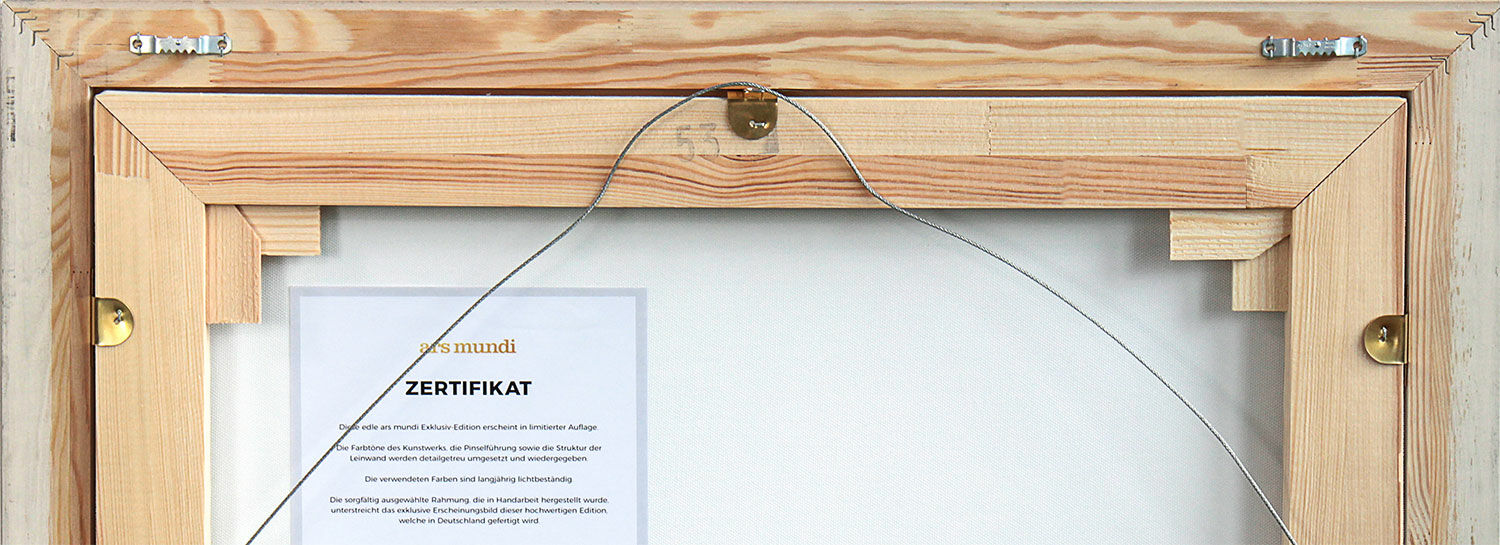Picture "Woman with Parrot" (1866), framed


Picture "Woman with Parrot" (1866), framed
Quick info
limited, 199 copies | numbered certificate | reproduction, Giclée print on canvas | on stretcher frame | framed | size 56 x 80 cm (h/w)
Detailed description
Picture "Woman with Parrot" (1866), framed
The French masterpieces of the 19th century from the Metropolitan Museum of Art in New York as special guests in Berlin, Neue Nationalgalerie, from 1 June to 7 October 2007! Accompanying this exhibition, the most outstanding paintings of the exhibition were published in a limited edition of only 199 copies each: The high-quality museum reproductions were worked by hand onto artists' canvas and stretched on stretcher frames. The canvas structure is tangible and visible. Relief-like brush structures are intricately applied by hand. Exquisite solid wood framing underlines the exclusive appearance. With numbered certificate of limitation on the back.
Original: Oil on canvas, The Metropolitan Museum of Art, New York.
High-quality reproduction using the Fine Art Giclée process directly onto the artist's canvas, stretched on a stretcher frame. Limited edition of 199 copies. Framed in a handmade, golden solid wood frame. Size 56 x 80 cm (h/w).
About Gustave Courbet
1819-1877
The French painter fled to Switzerland in 1873, where he died on 31 December 1877. As a supporter of the revolutionary government in the Franco-Prussian War of 1870/71 and a member of the Commune, he was blamed for the wreckage of the Vendôme Column, which was the symbol of the hated and defeated Empire. After completing his six-month prison sentence, he evaded the costs of its re-building by fleeing to Switzerland.
Born on 10 June 1819 in Ornans near Besançon, Courbet began his education by studying law but soon found greater interest in painting. However, he also gave up this apprenticeship but continued studying as an autodidact. He soon found his characteristic style: attention to detail, plasticity and high expressiveness. In addition, a characteristic was realism which visualises his anti-authoritarian-social attitude. In his writings, he declared: "Painting is an essentially concrete art and can only consist of the representation of real and existing things. (...) Realism is, by its very nature, a democratic art."
However, Courbet was not recognised in France during his lifetime but was appreciated greatly in Germany. His works had a great influence on painters such as Wilhelm Leibl and Hans Thoma. His landscape and figure paintings are not simply realistic depictions of nature but often have a parable-like quality.
Giclée = derived from the French verb gicler "to squirt, spurt".
The giclée method is a digital printing process. It is a high-resolution, large-format printout on an inkjet printer with special different-coloured dye- or pigment-based inks (usually six to twelve). The colours are fade-proof, i.e. resistant to harmful UV light. They have a high richness of nuance, contrast and saturation.
The giclée process is suitable for art canvases, handmade and watercolour paper as well as for silk.
The 19th-century trend of painting originated in France. Gustave Courbet was regarded as the initiator of the realist movement.
In Germany, Wilhelm Leibl and Hans Thoma, among others, were very enthusiastic about this style, which dealt with reality in a realistic way. In the 20th century, there were always realistic tendencies, such as Nouveau Réalisme with artists like Arman and Jean Tinguely and the movement New Objectivity. New forms of realism emerged in the 1960s.
American realism was founded by a group of eight painters of the Ashcan School. They were later joined by Edward Hopper, who became famous for his typically American motifs, depictions of people in architectural or landscape settings in static, actionless situations.






